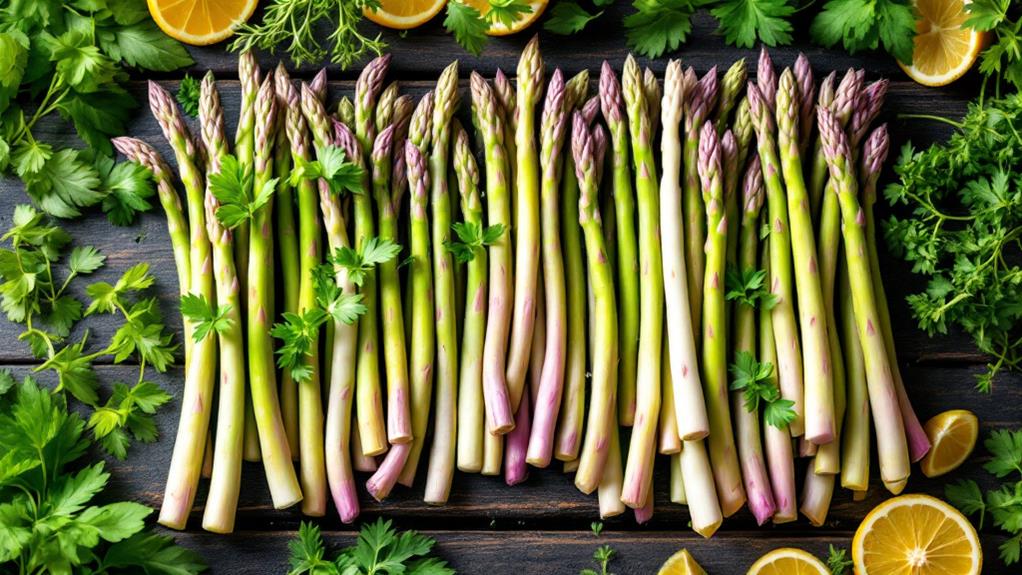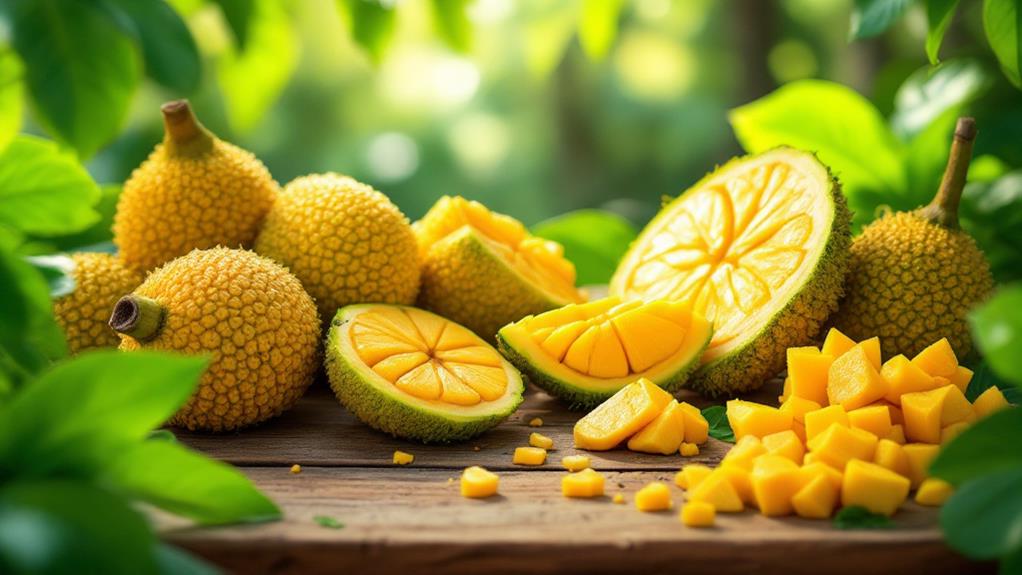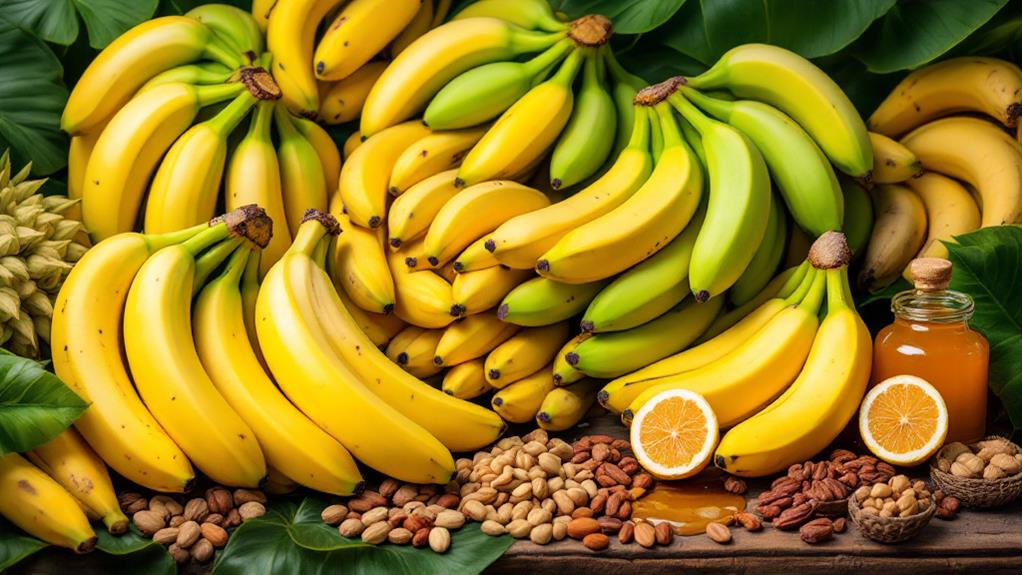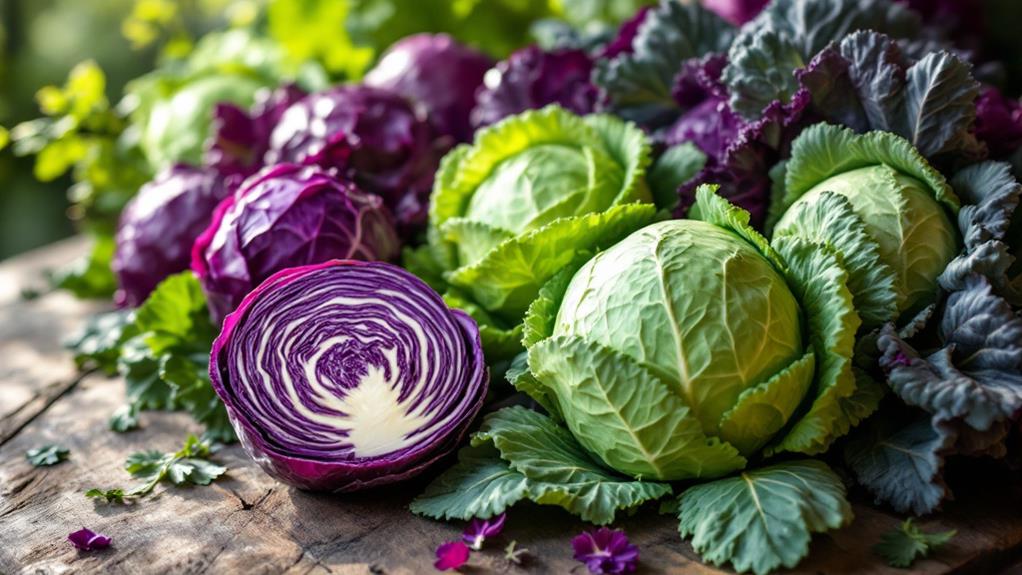Can You Cook Vegetables in a Pressure Cooker? A Complete Guide
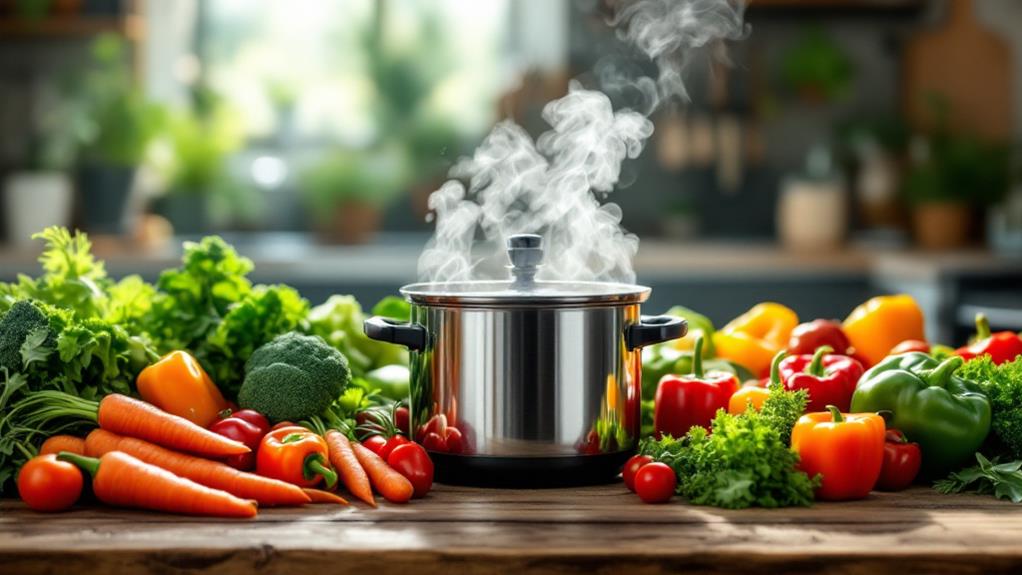
Yes, you can cook a wide variety of vegetables in a pressure cooker, making your meal prep faster and more nutritious. High-water content veggies like carrots and spinach cook swiftly, retaining their lively colors and crucial nutrients. For starchy options, such as potatoes, you'll achieve perfect tenderness in about 10-15 minutes. Simply cut your veggies uniformly, use enough water for steam, and secure the lid properly. Beyond saving time, pressure cooking improves flavors, making seasoning almost optional. Immerse yourself in techniques and vegetables suited for pressure cooking, and investigate ways to incorporate them into delicious and healthy meals.
Benefits of Pressure Cooking
In the domain of cooking vegetables quickly and efficiently, few methods compare to pressure cooking. This cooking method greatly reduces cooking time, often completing dishes in under 15 minutes. By creating a high-pressure environment, it cooks food faster while retaining crucial moisture, making it an energy-efficient choice for your kitchen.
Moreover, pressure cooking excels in nutrient retention. Unlike boiling or steaming, which can leach vitamins and minerals from vegetables, the sealed environment of a pressure cooker prevents this loss. This means you're serving dishes packed with more of the nutrients your body needs.
Visually, pressure cooking also preserves the lively colors of vegetables, enhancing the appeal of your meals. You'll find that greens remain green and reds stay rich, making for a more enticing plate.
Flavor-wise, pressure cooking is hard to beat. The concentrated steam infuses the vegetables with a depth of flavor that often eliminates the need for excessive seasoning. This method allows the natural taste of vegetables to shine through, providing a delicious and healthy culinary experience. With pressure cooking, you're not just saving time; you're also enhancing the quality of your meals.
Best Vegetables to Cook
Having investigated the myriad benefits of pressure cooking, let's turn our attention to the best vegetables to cook using this method. Start with high-water content vegetables like carrots, beans, bottle gourd, and spinach. These veggies cook quickly in a pressure cooker and retain their nutrients, offering substantial health benefits. If you're using an Instant Pot, they'll steam beautifully in just a cup of water.
Starchy vegetables like potatoes and sweet potatoes require a bit more time. Whole potatoes, for instance, need about 10-15 minutes, depending on their size. They become perfectly tender, making them ideal for mashed potatoes or a hearty stew. Remember, the key to getting them just right is to adjust the cooking times based on the size and type.
Non-starchy vegetables such as broccoli and cauliflower are perfect for quick meals. They cook in as little as 0-3 minutes under high pressure, allowing for a speedy dinner prep. Leafy greens like kale should be pressure-cooked for 1-3 minutes to maintain their texture and nutrients.
- High-water content vegetables: Quick cooking and nutrient retention.
- Starchy vegetables: Longer cooking times for perfect tenderness.
- Non-starchy vegetables: Quick meals with minimal cooking time.
Preparation Techniques
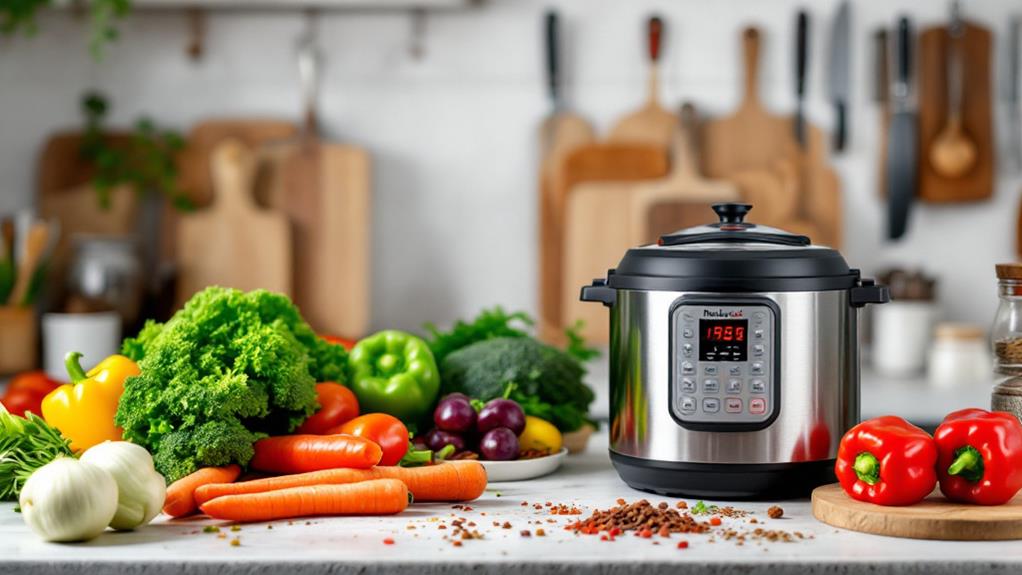
Preparing vegetables for pressure cooking is all about precision and consistency. Start by cutting your vegetables into uniform pieces. This guarantees they cook evenly and maintain an ideal texture inside your Instant Pot. Before you begin the cooking method, add salt to taste. This step improves the flavor as your vegetables cook under pressure.
Next, measure and add 3 to 4 tablespoons of water for every 350 to 500 grams of vegetables. This water is vital as it creates the steam needed for pressure cooking. For smaller vegetables or when using a steamer basket, aim for the same water ratio to maintain the right environment inside the pressure cooker.
Confirm the lid is secured properly and the weight is positioned correctly to maintain the intended pressure throughout the cooking time. This is fundamental for achieving the best results and avoiding any mishaps.
When the cooking time is up, use the quick release method by running the pot under cold water. This helps all the steam escape quickly, guaranteeing safety and preventing overcooking. This method assures that your pressure-cooked vegetables come out perfectly cooked every time.
Cooking Instructions
You've prepped your vegetables perfectly, so now it's time to cook them to perfection. Start by cutting your vegetables into uniform pieces to guarantee even cooking. For every 350 to 500 grams of vegetables in the Instant Pot, add 3 to 4 tablespoons of water. This water will generate the steam needed to cook your veggies efficiently. Use a steamer basket to keep the vegetables raised, preventing them from sitting in excess water.
Secure the lid and set the Pot to heat until you hear two whistles. This signals that your vegetables are cooking at the right pressure. After the second whistle, turn off the heat immediately to avoid overcooking. For a quick pressure release, carefully run cold water over the cooker. Make certain all steam has escaped before opening the lid to keep things safe.
Remember, the amount of time needed depends on the vegetable's water content. Spinach may only take a couple of minutes, while carrots might need longer. Always check the texture for doneness.
- Uniform pieces guarantee even cooking
- Use a steamer basket for best results
- Quick release with cold water for safety
Starchy Vegetable Methods
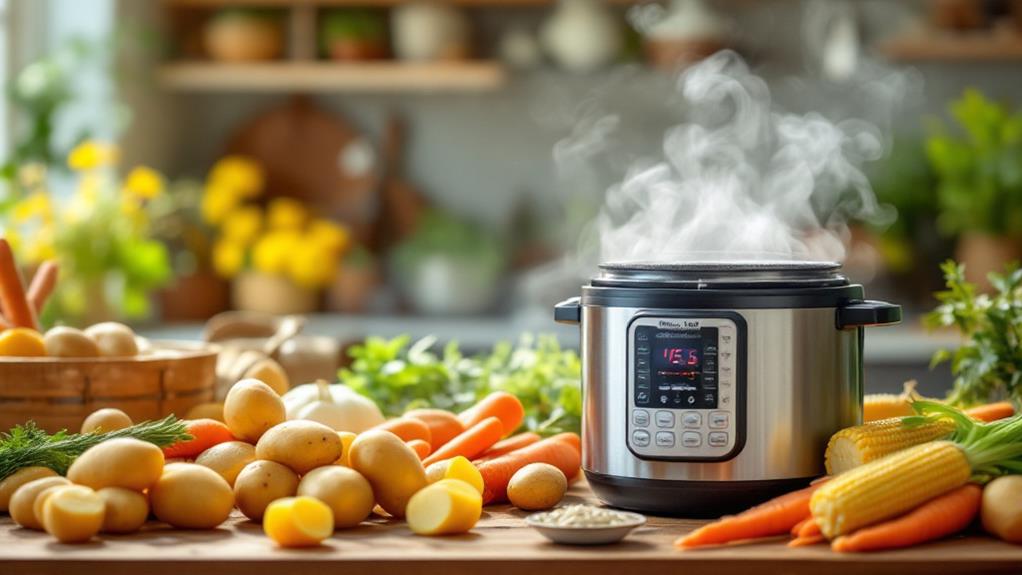
When cooking starchy vegetables in a pressure cooker, it's crucial to adjust your approach to achieve the best results. These veggies, like potatoes, sweet potatoes, and butternut squash, have specific cooking times and methods that can transform them into delicious food.
Start with cubed potatoes, which cook faster than whole potatoes. You only need about 3-4 minutes under pressure for fresh cubes. For mashed potatoes, you can remove the skin beforehand. If you prefer whole potatoes, remember to poke them with a fork to prevent explosions. This guarantees even steam generation, vital for your pressure cooker. You should also add at least 1 cup of water to aid steam production.
Sweet potatoes, regardless of being whole or cubed, require careful timing. Whole sweet potatoes need about 10-15 minutes, while cubed ones cook in just 3-4 minutes if cut evenly. Butternut squash is a versatile option, taking only 4-6 minutes for uniform pieces. You can even cook it whole without peeling, making it a convenient choice. By following these methods, you'll master cooking starchy vegetables in your pressure cooker, guaranteeing every meal is both quick and satisfying.
Non-Starchy Vegetable Tips
While starchy vegetables demand specific timing in a pressure cooker, non-starchy vegetables like broccoli and cauliflower offer a different challenge. To cook vegetables like these, you need to focus on preserving their crisp texture and lively color. Use a cooking time of 0 minutes, which means they'll cook while the pot reaches pressure. This technique helps retain their nutrients. For fresh broccoli, steam them for 0 minutes under high pressure. If you have frozen broccoli, add 2 minutes for ideal results.
Remember, sturdy leafy greens like kale need a bit more time. Chop them up and cook on high pressure for 1-3 minutes, then perform a quick release to prevent overcooking. This step is essential for halting the cooking process and maintaining their bright color and nutritional value. Brussels sprouts can be halved and steamed for 1-2 minutes, while asparagus should be cooked for 0-2 minutes depending on how tender you like them.
To guarantee success, keep these tips in mind:
- Use the right amount of water to generate steam without diluting flavors.
- Quick release immediately to stop cooking.
- Monitor cooking times carefully to maintain texture.
Serving Suggestions
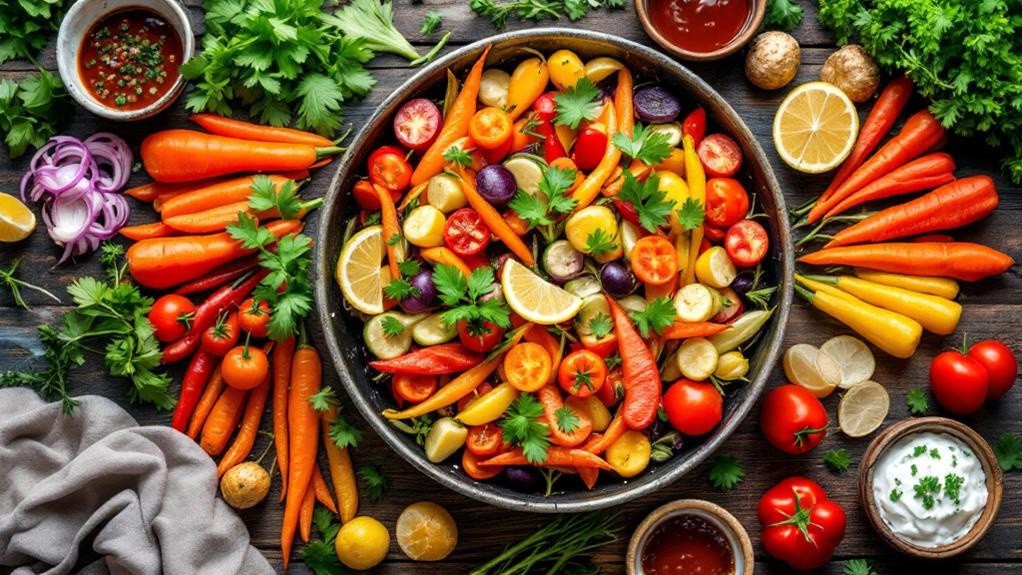
A myriad of serving options awaits once your pressure-cooked vegetables are ready. An instant and easy way to make a lively side dish is by pairing them with proteins like chicken, beef, or fish. This cooking method not only improves your main course but also contributes a splash of color and nutrition. If you're looking for more variety, use a steamer basket during cooking to keep the vegetables above the water in the bottom, preserving their texture and flavor.
Once you release the pressure, consider incorporating these veggies into salads. They'll add extra texture, flavor, and nutrients, elevating your meal's general appeal. Alternatively, try using pressure-cooked vegetables as a filling for wraps or sandwiches—a nutritious and satisfying option for lunch or dinner.
You can also blend them into soups or purees for a creamy consistency, perfect as a comforting starter or even the main dish. Ultimately, combine pressure-cooked vegetables with grains like quinoa or rice. This creates a complete and balanced meal, rich in vitamins and fiber, ensuring you enjoy a wholesome dining experience. These serving suggestions transform your vegetables into versatile, delicious components of any meal.

